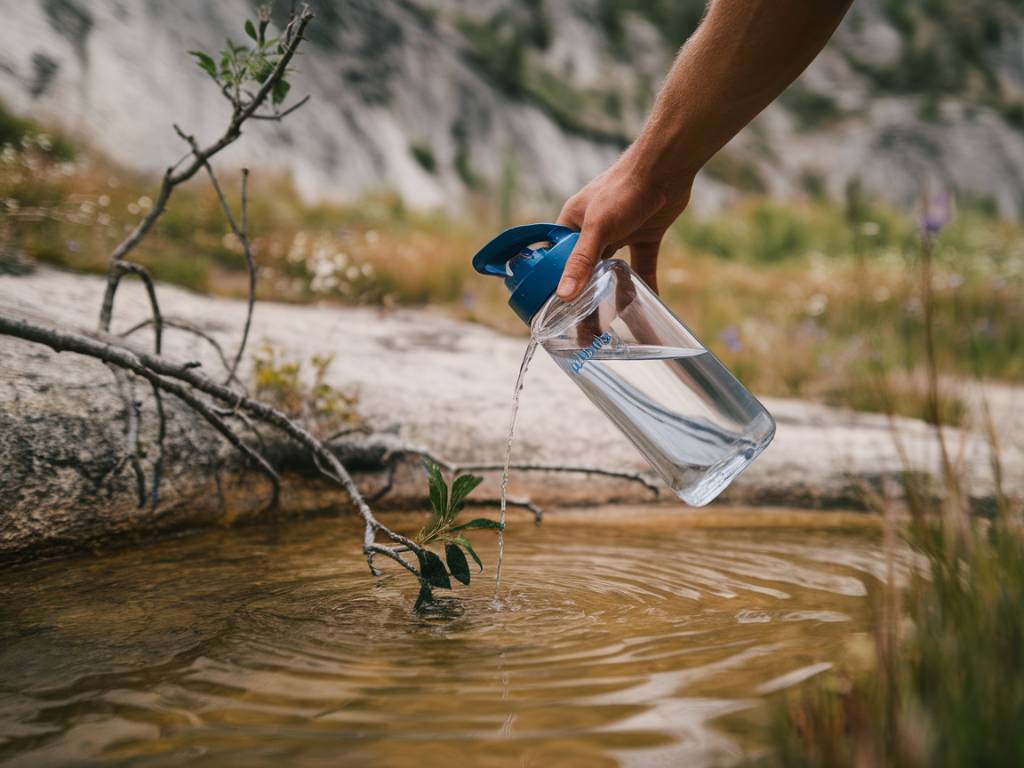Embarking on an adventure into the wilderness can be an exhilarating experience, but it comes with its fair share of challenges. One of the most crucial aspects of surviving and thriving in the wild is access to clean, potable water. Without the convenience of modern plumbing, travelers must become adept at purifying and storing water to ensure their safety and well-being. In this article, we’ll explore various methods to purify and store water safely while traveling in the wild.
The Importance of Water Purification
Water is essential for survival, but not all water sources are safe to drink. Contaminated water can harbor harmful microorganisms, parasites, and chemicals that can lead to severe illnesses. Purifying water is a critical step to prevent waterborne diseases. Understanding the methods available and knowing how to use them correctly can mean the difference between a successful adventure and a potentially life-threatening situation.
Choosing a Water Source
Before diving into purification techniques, it’s important to choose the best possible water source. Look for:
- Flowing Water: Streams and rivers are generally better choices than stagnant ponds or lakes.
- Clear Water: Water that looks clear is often safer than murky or muddy water.
- Higher Elevation: Water at higher elevations is less likely to be contaminated by human or animal activity.
Water Purification Methods
There are several methods to purify water in the wild, each with its strengths and limitations. Here are some of the most effective techniques:
Boiling
Boiling water is one of the most reliable methods for killing pathogens.
- Bring water to a rolling boil for at least one minute (three minutes at higher altitudes).
- Allow the water to cool before drinking.
Filtration
Filtration systems are designed to remove particulates and some microorganisms from water.
- Portable water filters are lightweight and easy to use.
- Ensure the filter’s pore size is 0.2 microns or smaller to effectively remove bacteria and protozoa.
Chemical Treatments
Chemical treatments use substances like iodine or chlorine to disinfect water.
- Follow the manufacturer’s instructions for correct usage and dosage.
- Allow sufficient time for the chemicals to work, usually 30 minutes to 4 hours, depending on the product.
Ultraviolet (UV) Light
UV light can be effective in neutralizing bacteria and viruses.
- Portable UV light devices like SteriPEN are convenient and effective.
- Ensure the water is clear, as UV light is less effective in turbid water.
Solar Disinfection (SODIS)
SODIS uses sunlight to purify water.
- Place clear plastic bottles filled with water in a sunny area for at least six hours.
- This method works best on sunny days and with clear water.
Storing Water Efficiently
Once your water is purified, it’s important to store it properly to maintain its cleanliness. Here’s how:
Clean Containers
Use clean containers with tight-sealing lids to store your water.
- Food-grade plastic, stainless steel, or glass are good options.
- Avoid containers that previously held chemicals or other non-food substances.
Keep it Cool
Store water in a cool, dark place to prevent bacterial growth.
- Avoid direct sunlight exposure.
- If possible, bury the container slightly underground to keep it cool.
Label and Rotate
If you’re storing water for an extended period, label containers with the date of storage and rotate them periodically to ensure freshness.
- Use the oldest water first.
- Regularly check stored water for contamination.
Additional Tips for Safe Water Practices
To maximize your safety and efficiency when purifying and storing water in the wild, consider the following additional tips:
Practice Good Hygiene
Always wash your hands with purified water or sanitizer before handling clean water or containers.
- This reduces the risk of recontaminating your purified water.
Use a Pre-Filter
In highly turbid water, consider using a pre-filter to remove large particles before applying your chosen purification method.
- A bandana or cloth can serve as a makeshift pre-filter.
Avoid Cross-Contamination
Keep purified water and unpurified water separate to avoid cross-contamination.
- Label your containers clearly.
Understand Local Hazards
Research the local area to understand any specific waterborne hazards that may be present.
- In some regions, certain purification methods may be more effective against specific contaminants.
Essential Gear for Water Purification and Storage
Having the right gear can make water purification and storage significantly easier and safer. Here are some essential items to consider for your next adventure:
Water Purification Tablets or Drops
These are compact, lightweight, and easy to carry, making them ideal for emergency situations.
Portable Water Filter
Look for a filter that’s durable and suitable for the types of environments you’ll encounter.
UV Purifier
A battery-operated UV purifier can quickly disinfect water without the need for boiling or chemicals.
Collapsible Water Containers
These containers save space and can be easily packed away when not in use.
Water Bottles
Durable, reusable water bottles are a must for any trip, ensuring you have a safe way to drink and store water on the go.
Hydration Bladders
Ideal for hiking and trekking, hydration bladders allow you to carry a significant amount of water comfortably.
Conclusion
Traveling in the wild offers a unique opportunity to connect with nature, but it also requires preparation and knowledge, especially when it comes to essential resources like water. By understanding the different methods of purifying water, selecting safe sources, and storing it properly, you can enjoy your adventure without compromising your health. Equip yourself with the right tools, practice good hygiene, and always be mindful of potential hazards to ensure clean, safe drinking water throughout your journey. Safe travels!

